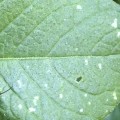[stub]
Botanical Information
Taxonomy
History
Physical Description
Varieties & Cultivars
Categories or Types of Peas
Colors Available
Varieties to Grow
Growth Requirements
Climate & Temperature Requirements
Air Temperature
- peas perform better in cool weather (60-75°F)
- shade cloth can help extend the season when it gets warm
Soil Temperature
Humidity
Day Length or Light Requirements
Site Conditions Favored
Soil Requirements
Soil Texture
- prefer plenty of organic matter
pH
- 5.5-6.8
Nutrient Requirements
- prefer plenty of organic matter
Propagation
Methods of propagation
Seed
- presoak seeds to prevent disease and to speed germination
- peas are usually direct-sowed as soon as the ground can be worked in the spring
Division
Cuttings
Transplanting or Potting Up
Seed Saving
Planting Out
Bed Prep & Soil Amendments
Bed Spacing
Row Spacing
Planting Depth
Alternative Bed Methods
Container Gardening
Routine Cultivation & Maintenance
Water Requirements
- provide moderate water until bloom, then lower the water rate
- adequate water is needed for high yield
Fertilization Recommendations
Mulching & Weeding
Pinching or Pruning & Dividing
Support
- require trellising
Winterizing
Companion Planting
Helpful Companions
Harmful Companions
Companion to..
Pests, Diseases & Problems
Common Pests
Common Diseases
Symptoms
Whole Plant
Leaves
Stem/Trunk
Flowers
Fruit
Roots
Harvesting & Storage
Edible Parts of the Plant
- young shoots
- pod
- peas
Yield
- regular picking extends the harvest and increases the yield
Days to Harvest / Harvest Timing
- Pea varieties that have edible pods should be harvested when the seeds (peas) are nicely developed in the pod and have a bright green color VG
- English peas should be harvested when the pods are full and well rounded out VG
- usually ready to harvest about 3 weeks after the flower appears PVFS
- snow peas should be harvested before the peas are fully developed in the pods PVFS
- snap peas should be harvested when the peas have enlarged in the pods PVFS
Harvest Methods
Storage of harvest
Fresh
Canned
Frozen
Pickled
Dried
Cooking
Nutritional Benefits & Values
- riboflavin
- vitamin B6
- Magnesium
- Potassium
- dietary fiber


